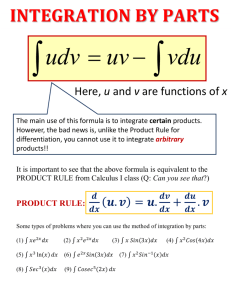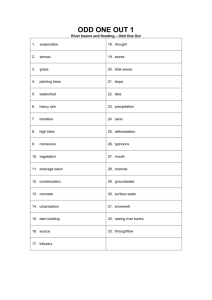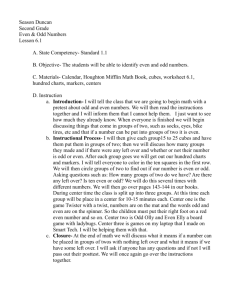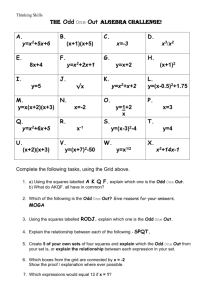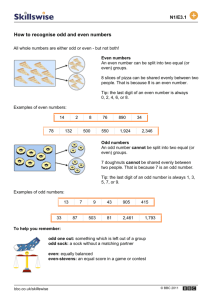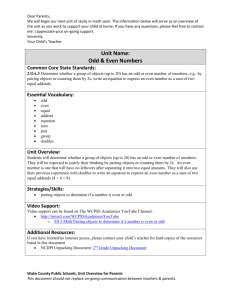Pell`s equation
advertisement
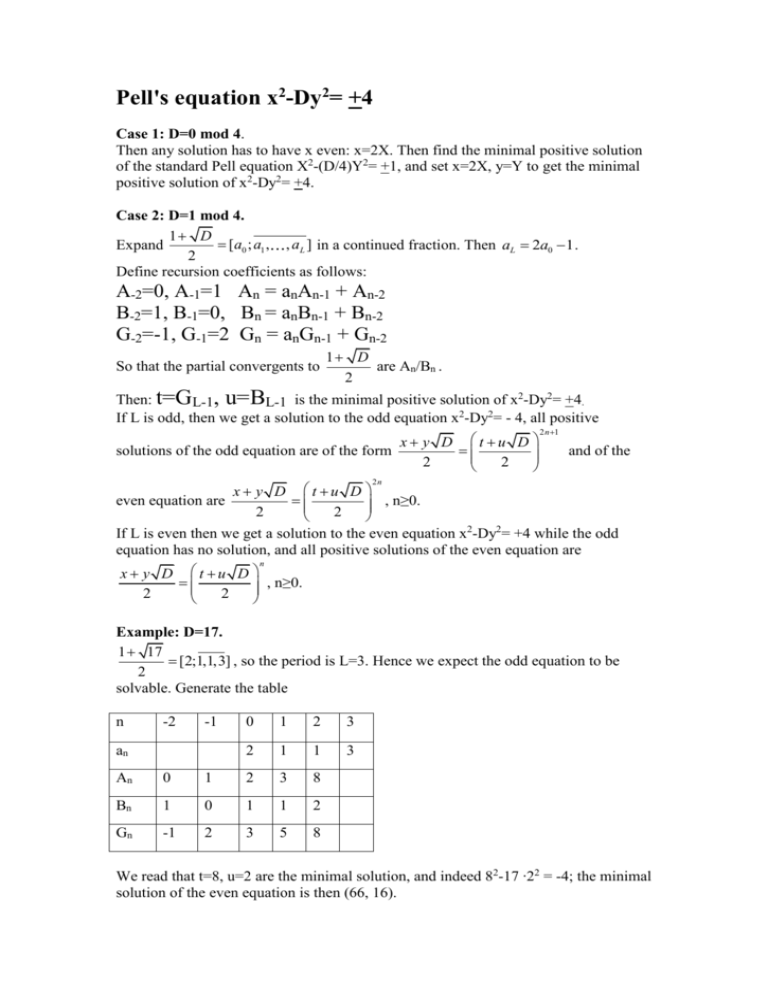
Pell's equation x2-Dy2= +4 Case 1: D=0 mod 4. Then any solution has to have x even: x=2X. Then find the minimal positive solution of the standard Pell equation X2-(D/4)Y2= +1, and set x=2X, y=Y to get the minimal positive solution of x2-Dy2= +4. Case 2: D=1 mod 4. 1 D [a0 ; a1 , , aL ] in a continued fraction. Then aL 2a0 1 . Expand 2 Define recursion coefficients as follows: A-2=0, A-1=1 An = anAn-1 + An-2 B-2=1, B-1=0, Bn = anBn-1 + Bn-2 G-2=-1, G-1=2 Gn = anGn-1 + Gn-2 So that the partial convergents to 1 D are An/Bn . 2 Then: t=GL-1, u=BL-1 is the minimal positive solution of x2-Dy2= +4. If L is odd, then we get a solution to the odd equation x2-Dy2= - 4, all positive x y D t u D solutions of the odd equation are of the form 2 2 2 n 1 and of the 2n x y D t u D even equation are , n≥0. 2 2 If L is even then we get a solution to the even equation x2-Dy2= +4 while the odd equation has no solution, and all positive solutions of the even equation are n x y D t u D , n≥0. 2 2 Example: D=17. 1 17 [2;1,1,3] , so the period is L=3. Hence we expect the odd equation to be 2 solvable. Generate the table n -2 -1 an 0 1 2 3 2 1 1 3 An 0 1 2 3 8 Bn 1 0 1 1 2 Gn -1 2 3 5 8 We read that t=8, u=2 are the minimal solution, and indeed 82-17 ∙22 = -4; the minimal solution of the even equation is then (66, 16). Example: D=33. 1 33 [3; 2,1, 2,5] , so the period is L=4. The odd equation has no solutions. 2 Generate the table n -2 -1 0 1 2 3 4 an 3 2 1 2 An 0 1 3 7 10 27 Bn 1 0 1 2 3 8 Gn -1 2 5 12 17 46 5 The minimal solution of the equation x2-33y2=+4 is t=46, u=8.



